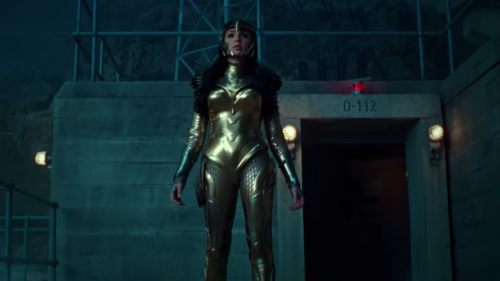2017 And The Year Of Isolated Female Communities In Film
In the 1993 film Jurassic Park, Laura Dern’s Dr. Ellie Sattler envisions a world where “dinosaurs eat man; woman inherits the Earth.” It’s a dream many a woman has had of a garden of Eden if Eve got there first. And with our current president’s own thoughts on women well-documented it’s understandable that the year’s movies have taken the “women in isolation” mentality and run with it. Three major summer movies this year put the spotlight on women who isolate themselves. Patty Jenkins’ Wonder Woman, Sofia Coppola’s The Beguiled and David F. Sandberg’s Annabelle: Creation establish detached communities of women and examine what happens when an “intruder” invades, displaying the strength of women in numbers and asking whether reunification with the world at large is desired, and possible.
Wonder Woman was the first out of the gate with its all-female community, located in the Edenic paradise of Themiscyra. Themiscyra is the ultimate depiction of the feminine community in concept. Audiences aren’t privy to the basic minutiae of the island but it’s evident that they are a familial community more than citizens or neighbors. Themiscyrans are raised to be warriors but simultaneously help raise each other’s children - everyone seems to have a hand in raising Princess Diana (Gal Gadot) - and mutually aid in each other’s well-being.
In comparison to The Beguiled or Annabelle, the ladies of Themiscrya have an awareness of man’s destruction after stopping the God, Ares. They train to fight so they can never be taken off their guard, prepared to defend themselves if attacked. But therein lies the problem. Their isolation is self-imposed and self-limiting; they aren’t training to save the world but to keep their paradise protected generally (and Diana safe specifically). While Themiscyra is presented as the last bastion of tranquility, it comes at the expense of preparing for an enemy that is unknown, undermining the first rule of war, “know thy enemy.” When Steve Trevor (Chris Pine) brings WWI to the island, the women’s techniques and tactics are underwhelming and out of touch. It is only through Diana leaving the structured confines of her home, interacting with an outside world of flawed people - both male and female - that she learns how to be a better Themiscyran.
Diana’s relationship with Trevor and his cohorts is important towards removing the barriers that have kept Themiscyra as an isolated haven. Though it’s amazing to see women working together in a utopia, it prohibits any sense of true inclusion, perpetuating an exclusive community that only divides the genders in the long run. Diana breaking the barrier and leaving Themiscyra to work side-by-side with Steve is the catalyst to changing minds towards femininity, and by extension the world. Steve takes point on telling Diana what proper women do, in terms of how they dress and act, but Diana proves his views as myopic because of her segregated upbringing. Diana’s inclusion into the world of men ends up being the perfect fantasy of the bridge between the sexes.
The Beguiled situates the all-female paradise away from fictional realms into the real world, more specifically the South in the midst of the Civil War. Unlike the women of Themiscyra who are prepared to battle men, the ladies of Miss Martha Farnsworth’s school are eager to embrace the mysterious man (played by Colin Farrell) who arrives to shake up their staid existence. Where Steve Trevor is a foil to be molded by Diana’s power, Farrell’s McBurney manipulates the women of the school, pitting them against each other and forcing them to compete for his affections. He is the personification of Original Sin for the socially, and sexually, stunted women. Nicole Kidman’s Miss Martha is also “beguiled” by the stranger in spite of her logic that cloistering the girls is for their own protection as she means to reduce “temptation” from roving soldiers and keep her girls refined young women.
McBurney’s scheming is utilized as a means to isolate himself within their world. He wants to stay at the school to avoid going back to the war. He sees the ladies confinement as the quick road to easy street. His infiltration becomes parasitic, leeching off the ladies’ success in their safety. When he’s rejected by the women - and metaphorically castrated by losing a leg - he drops the honeyed tongue approach and becomes a cruel intruder, demanding they acquiesce or die. Unlike the women of Themiscyra, who remain isolated but possess the knowledge that Diana opens the door to future integration on their own terms, the ladies of The Beguiled refuse to acquiesce to male ownership and decide to stay isolated, leaving McBurney outside the gates while they remain safe, and lonely, in the gilded cage of their choosing. It isn’t ideal, but it’s safer than giving an inch of ground to someone desperate to control them.
Most recently the horror film Annabelle: Creation situates the machinations of the killer porcelain doll within the world of the 1950s - era of Donna Reed - and a group of female orphans invited to live in the home of a dollmaker and his wife. It’s important to note that, unlike Wonder Woman or The Beguiled, the girls are shipped to the Mullins’ household at the behest of the orphanage owner, Father Massey (Mark Bramhall) as opposed to their own free will. The girls are invited by a man, Samuel Mullins (Anthony LaPaglia), as a means of helping his depressed wife cope with the death of their daughter. Once the young girls are ensconced in the Mullins home they are left to their own devices. Where the women of The Beguiled are content to stay in their house, the young girls of Annabelle are desperate to get out and escape the evil hunting them.
The film’s horror genre necessitates the need to escape confinement for survival. The girls are pitted against each other, but only because the demon needs to garner a soul to manifest itself. Similar to Wonder Woman, protagonist Linda (Lulu Wilson) must take point and unify the disparate females together to destroy the villain. Where Annabelle: Creation is different is in the removal of a noticeable male villain in favor of female - or asexual - ones. The Annabelle doll and little Janice (Talitha Bateman), the victim of Annabelle’s villainy, are conduits for the unknown entity known as “The Nun,” which is also presented as having a female form but is regarded as a genderless demon. In this case gender becomes incidental and convenient.
Janice and Linda are forced to fight not because they are female but because the erosion of their friendship plays towards the demon’s need to destroy all that is good. Where Wonder Woman and The Beguiled focus on real, tactile depictions of villainy - male-driven world domination and male-controlled domesticity - Annabelle: Creation substitutes it for an amorphous, all-encompassing derivative of “evil.” The ladies’ isolation doesn’t have a grander implication because the stakes are ill-defined and generic. It is different in that the only success the girls will have to survive is by breaking their isolating nature, but it lacks the punch of the female-directed films out this year.
Separating the women in isolation trope from the political landscape is impossible, and Hollywood is responding with more stories about what a world with gendered segregation could look like. The distinction lies in who is doing the isolating, in this case women themselves. They are willingly removing themselves from male society as a means of finding identity and agency on their own terms. These films, with the exception of Annabelle, see intrusion by men as the impetus for chaos and the need for feminine unity. These films aren’t anti-men but stand against the values that have subjugated women for centuries, perpetuated by decades of male patriarchy. It’s hoped that eventually women won’t have to isolate themselves - either in film or in reality - but join society as active and autonomous individuals.



